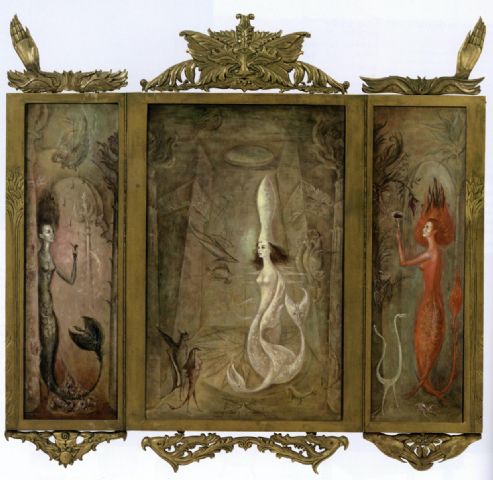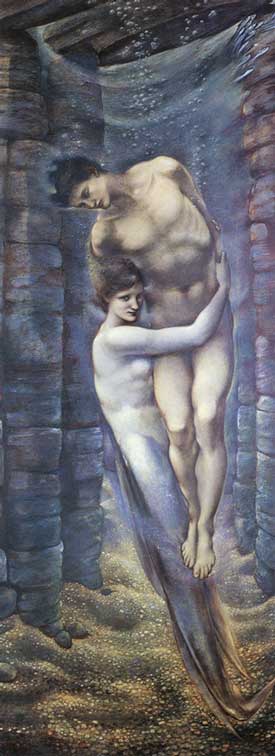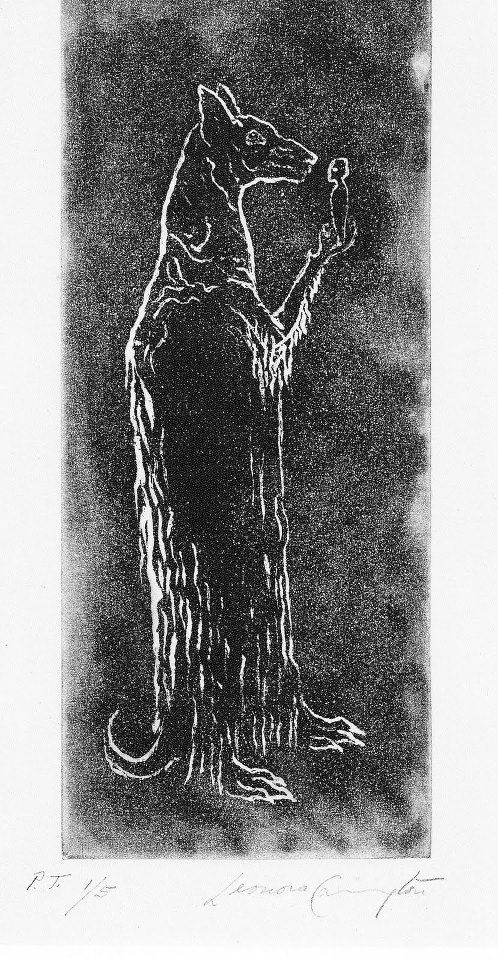
Edward Burne Jones, “The Sea Nymph”, 1881
For some time I have been thinking of mermaids. These alluring creatures embody many aspects of the current which animates the Haunted Shoreline, and there is also a strong local connection: the pre-Raphaelite painter Edward Burne Jones lived on this stretch of coastline, at Rottingdean, for the last 18 years of his life, and while residing here he seems to have been rather preoccupied (perhaps even haunted) by sea sirens, which appear in many of his paintings of this period (the wonderfully named blog The Kissed Mouth has an excellent post on this topic).
However, in order to be faithful to the spirit(s) of this adventure, I decided to delay writing about mermaids until such time as the Shoreline itself gave me a sign to proceed. And so it came to pass: I did not, alas, find an actual mermaid washed ashore, but I did find this:
This is an egg case, probably from a dogfish or ray (anyone able to identify the precise species is invited to get in touch through the comments), but the relevance here comes from the name given to such egg cases in folklore… mermaid’s purses.
The Shoreline having spoken, I headed into Rottingdean village, to St Margaret’s Church, which has a number of stained glass windows by Burne Jones (more on these in a future post) and memorial stones for the artist and his wife Georgiana set into the church wall:
I was told that nobody is sure whether Burne Jones is actually buried there- “probably his ashes” said the vicar. What is not in doubt is where he lived: he and his wife purchased two adjoining houses, Prospect Cottage and Aubrey Cottage, opposite the church, and later acquired a third – this last was called Gothic House, but the couple renamed it North End House, apparently in reference to North End Road, Fulham, where they had lived prior to their move to the coast (also, the house is the most northerly of the three). All these buildings still stand:
The blue plaque on Prospect Cottage:
So what it is about mermaids? Of course there is an erotic element, but it is an ambiguous eroticism: the mermaid, after all, is sexually unattainable, for obvious anatomical reasons. As such, she may be the epitome of the goddess/temptress dichotomy: able to drive men mad with a desire that can never be sated. But more than this, she is a liminal creature, simultaneously of both the visible human world and the unknowable occult depths (for previous consideration of liminal creatures- that is, Shoreline creatures, see here and here).
Regular readers will know that Surrealist, rather than pre-Rapaelite, art is the house style here at the Shoreline- there are many reasons for this, among them the fact that Surrealism was explicitly concerned with the threshold between the seen and unseen, the daytime world of waking consciousness and the dark dreamzone of the Unconscious, the land and the sea… the Shoreline. So here I present a few Surrealist mermaids. The first, by Andre Masson, is particularly apposite, as it was produced by the process of automatic drawing, one of the key Surrealist techniques for allowing the contents of the Unconscious to cross the liminal threshold and emerge into daylight:
That scoundrel Salvador Dali, meanwhile, painted an idiosyncratic vision of The Little Mermaid for a 1966 edition of Hans Christian Andersen’s fairytales, which I haven’t included in this post as it seems such an inferior example of his work, but it can be seen here. Instead I much prefer this, from 1939, in which Dali’s depiction of the mermaid’s dangerous eroticism appears to anticipate future trends in fetishwear:
Finally something from one of the Shoreline’s presiding goddesses, Leonora Carrington – in fact I have posted this painting before, when I mused on the fact that the progression of colours, black-white-red, refers to the three stages of alchemy. But some things bear repeating:
Now returning, like the Fools we are, to where we began- it may be of note that another folkloric name for a dogfish egg case, a mermaid’s purse, is devil’s purse. For not only can the mermaid torment a man with impossible desire, she may also drag him to his doom. Plunging into the hazardous waters of love, a man may be utterly undone, as Burne Jones’ most famous mermaid image, The Depths of the Sea (1881) illustrates. I leave you to ponder it, and ponder it well.

































